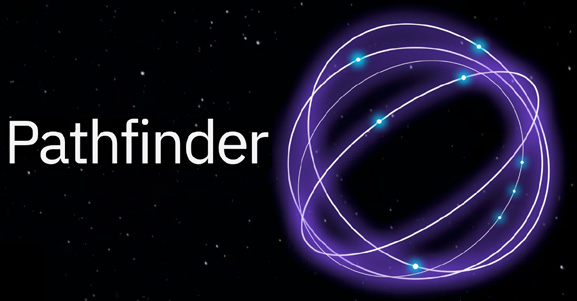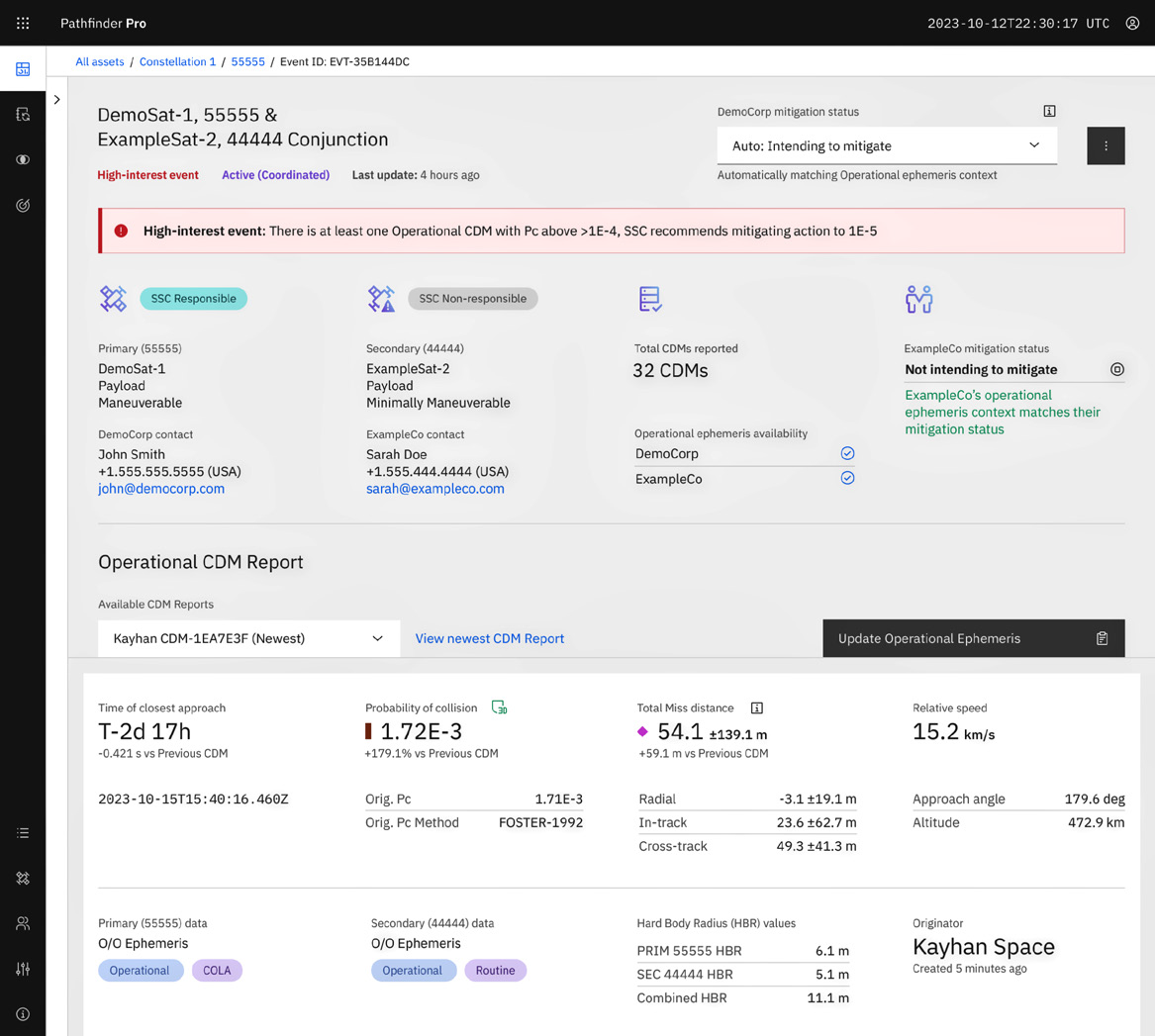Setting the rules of the road in space
Matt Shouppe is the Chief Commercial Officer of Kayhan Space. He blends his expertise from multiple technical and business domains to drive generational change in the space industry. He specializes in space situational awareness (SSA) and technologies that enable safe and sustainable operations for the growing space economy. Matt leads sales and business development (plus a dash of product management and marketing) for industry- leading software and SaaS applications for space mission planning and safety of flight for satellite operations.

Matt brings new technologies to market and wears multiple hats, from engineer to entrepreneur. He establishes scalable business models, crafts clear value propositions, executes go-to-market strategies, builds teams, and grows new lines of business with a proven track record of exceeding objectives and key results in all of the roles he has held.
Good day, Mr. Shouppe... Kayhan Space recently received new funding to the tune of $7 million. How will the company use this capitalization?

Matt Shouppe
Matt Shouppe
Kayhan Space will use this latest funding round to boost teams that are devoted to solving space traffic challenges. For example, the company has just pulled the wrapper off the first-ever autonomous space traffic coordination service software called Pathfinder™ 3.0. This breakthrough solution is commercially available and is already at the heart of multiple beta trials with satellite operators. The seed extension round that occurred this fall will see that money go toward growing the company on all fronts.
What makes Kayhan Space’ Pathfinder 3.0 such an important advancement in space traffic management?
Matt Shouppe
Pathfinder 3.0 is a milestone breakthrough for space traffic management. Space continues to get busier and more congested every day. Kayhan Space plays a key role in helping an increasing number of satellite owner-operators mitigate the risk of potential collision scenarios in space.
When satellite operators are involved in high-risk conjunctions, who should be the one to maneuver out of the way? Who has propulsion, for example, and who doesn’t? What are the maneuverability time windows for each satellite? How can operators plug that critical data into a coordination platform with others so everyone’s operating on the same rules of the road in space?
These were the questions we asked ourselves when designing Pathfinder 3.0. As a result, what we created is the first platform for machine-to-machine (M2M) space traffic coordination (STC) using a new rules-based framework. Previously, operators had to rely on manual communication with one another before planning operational maneuvers and that was often ad-hoc and frustrating for the operations teams.
Now with Pathfinder 3.0, operators can use Kayhan’s new, structured STC protocol (accessed through a new class of API calls) for proactively accepting or declining maneuver responsibility with the other party. It also decouples the two important steps of coordinating the maneuver responsibility intent and confirming the mitigation action itself. This new STC protocol is stunningly simple, yet very effective, for covering virtually any conjunction scenario, including the preferences of both operators involved.
Finally, we took this new Kayhan STC protocol and added the ability for users to opt-in to use this new system operationally in line with the Space Safety Coalition’s best practices and recommended “rules of the road.” This automatically establishes maneuver responsibility between two parties.
Pathfinder 3.0 combines an internationally recognized set of Best Practices with the new Kayhan STC protocol; both industry firsts that we believe will be a very disruptive and game-changing combination for operational space safety.
I should also reiterate that Pathfinder doesn’t “direct” satellites where to go like Air Traffic Control (ATC) systems do for the airlines and other air traffic. That is not what we do, and we don’t believe that is an approach that would work well, for a variety of reasons. We’re simply giving operators the tools to automate their own preferences themselves at the machine level and speak in a common language using a new rules-based framework that didn’t previously exist.

Mr. Shouppe, what has the market response to Pathfinder 3.0 been like among satellite and mission operators, as the space traffic coordination software is now commercially available and in beta trials?
Matt Shouppe
We released Pathfinder 3.0 in October 2023 and our initial feedback from operators has been overwhelmingly positive. We’re having a lot of conversations with our users who are asking questions such as, “How does the new system work for this or that specific scenario.” That has allowed us to dive in and walk through those scenarios to show them how the new Kayhan STC protocol operates for those scenarios.
Pathfinder has a free tier called Pathfinder Essentials with features for conjunction risk analysis and all the new STC functionality. We also offer a paid tier, Pathfinder Pro, that is more of the “white glove” service that covers all areas of operational spaceflight safety. That includes everything in Pathfinder Essentials plus optimized collision avoidance maneuver generation, on-demand conjunction safety screenings, orbit propagation, and dedicated support and consulting expertise from our astrodynamics team.
It was important for us to keep all the STC features in the free tier of Pathfinder so that we can maximize the network of satellite operators using the product and we wish to spread the message to all satellite operators to sign up for this offering. Even if a user satellite is non-maneuverable, they can still play a huge role in global STC simply by creating an account, putting in the satellite maneuverability information, and opting in to participate in the SSC’s Rules of the Road.
We already have more than two dozen operators and hundreds of satellites using Pathfinder today, with several more in the process of signing up as we speak.
Please tell us more about the aforementioned, recent, $7 million oversubscribed seed extension round and how the company plans to keep space flight safe?
Matt Shouppe
We are thrilled to have closed this latest fundraising round with support from venture capital firms Space Capital and EVE Atlas. They see the patterns of increasing numbers of satellites being launched into orbit with no signs of slowing down — safety and automation are paramount needs for this ongoing activity to successful scale. That is what we’re here to accomplish.
We are using the new funding to scale the Kayhan team across multiple areas including engineering, sales, and product development. We’re also expanding our product roadmap to start offering a wider variety of software applications as well as engineering services to meet the growing needs of our customers. We’ll have several more announcements about these exciting new offerings over the next few months.
What’s next for Kayhan Space? Is the company planning to expand into any other areas?
Matt Shouppe
Yes, we are expanding our offerings to support the U.S. Government sector, providing defense-related capabilities.

Historically for Kayhan Space, we’ve mostly focused our products and technology on commercial and civil areas, such as space situational awareness and space traffic management. We are now moving into Space Domain Awareness (SDA) as well. This was quite an obvious choice for us to make, given the overlap with many aspects of SDA and our existing expertise in astrodynamics and data analysis.
To support this growth for our U.S. Government business, we are opening a Washington, DC, area office and forming a dedicated Kayhan Federal team for pursuing and supporting these contracts. We look forward to expanding our relationships and business footprint across civil, defense, and intelligence agencies. There’s a lot happening on both the technology and team fronts at Kayhan Space. Please stay tuned.
www.kayhan.space



